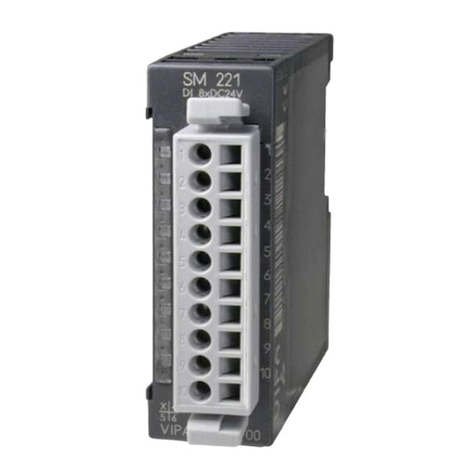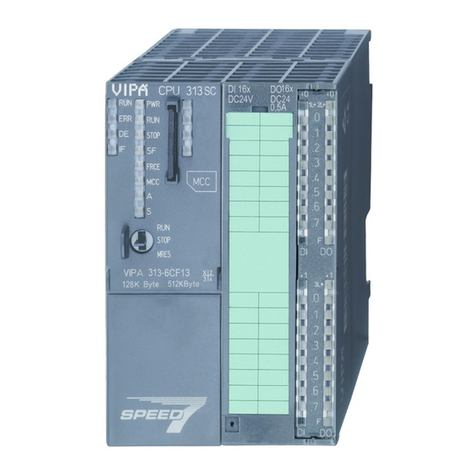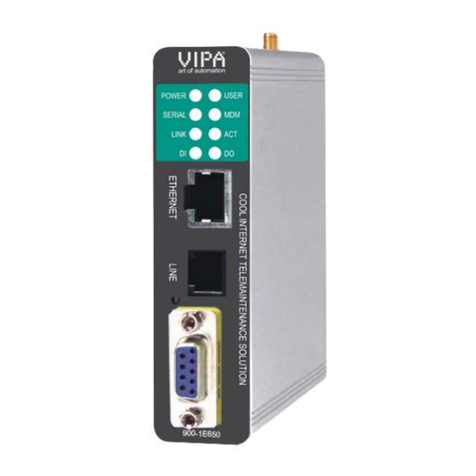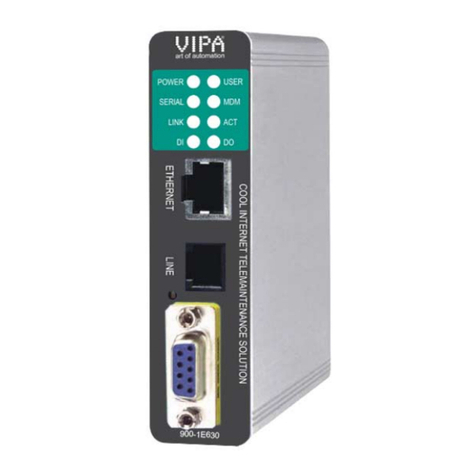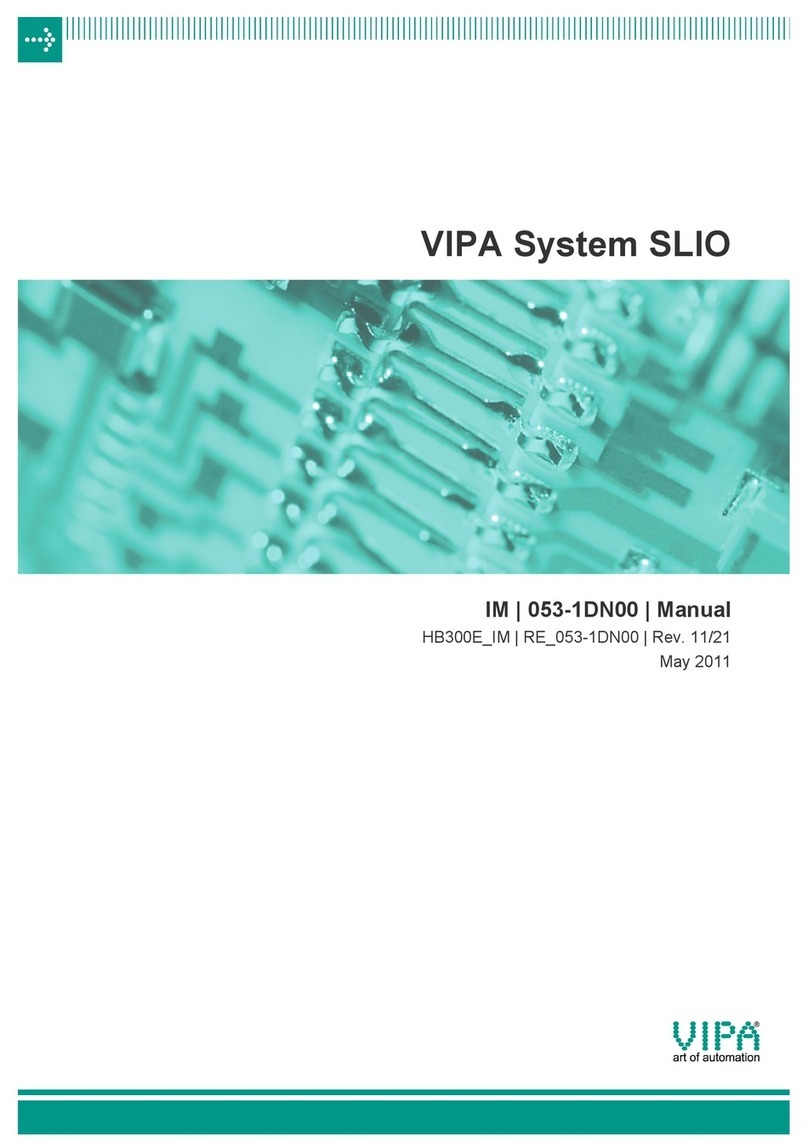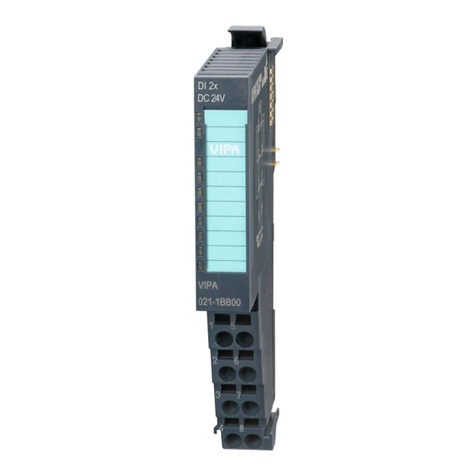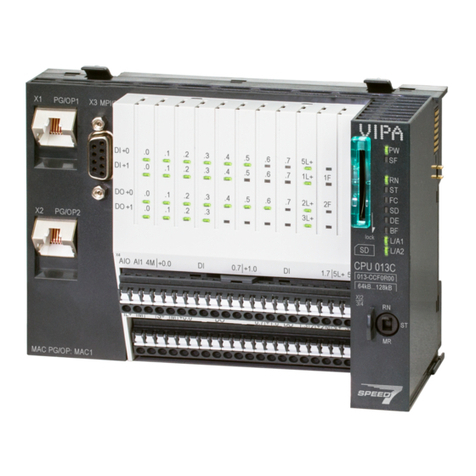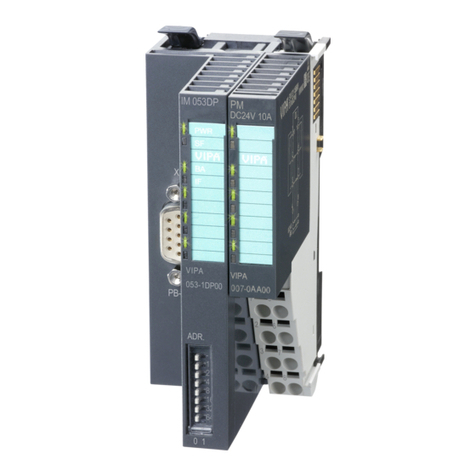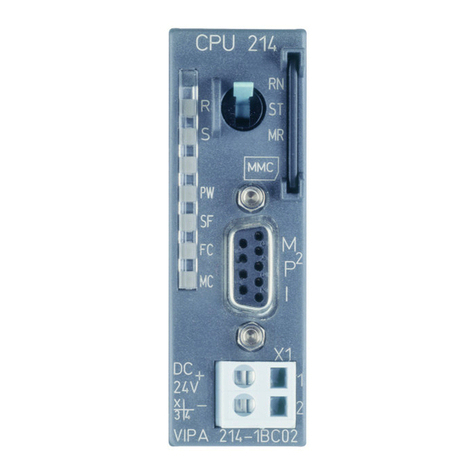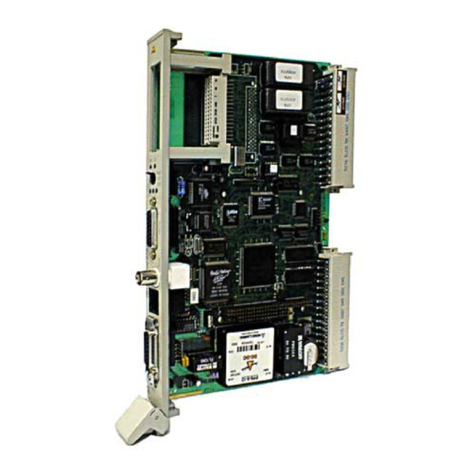
VIPA, SLIO, System 100V, System 200V, System 300V, System
300S, System 400V, System 500S and Commander Compact are
registered trademarks of VIPA Gesellschaft für Visualisierung und
Prozessautomatisierung mbH.
SPEED7 is a registered trademark of profichip GmbH.
SIMATIC, STEP, SINEC, TIA Portal, S7-300 and S7-400 are regis-
tered trademarks of Siemens AG.
Microsoft and Windows are registered trademarks of Microsoft Inc.,
USA.
Portable Document Format (PDF) and Postscript are registered trade-
marks of Adobe Systems, Inc.
All other trademarks, logos and service or product marks specified
herein are owned by their respective companies.
Contact your local VIPA Customer Service Organization representa-
tive if you wish to report errors or questions regarding the contents of
this document. If you are unable to locate a customer service centre,
contact VIPA as follows:
VIPA GmbH, Ohmstraße 4, 91074 Herzogenaurach, Germany
Telefax: +49 9132 744-1204
Contact your local VIPA Customer Service Organization representa-
tive if you encounter problems with the product or have questions
regarding the product. If you are unable to locate a customer service
centre, contact VIPA as follows:
VIPA GmbH, Ohmstraße 4, 91074 Herzogenaurach, Germany
Tel.: +49 9132 744-1150 (Hotline)
1.2 About this manual
This manual describes the IM 053-1DN00 of the System SLIO from
VIPA. It contains a description of the structure, project engineering
and deployment.
Product Order number as of state:
HW FW
IM 053DN 053-1DN00 01 V1.2.5
The manual is targeted at users who have a background in automa-
tion technology.
The manual consists of chapters. Every chapter provides a self-con-
tained description of a specific topic.
Trademarks
Information product
support
Technical support
Objective and contents
Target audience
Structure of the manual
VIPA System SLIO IM 053DN General
About this manual
HB300 | IM | 053-1DN00 | GB | 15-33 5


